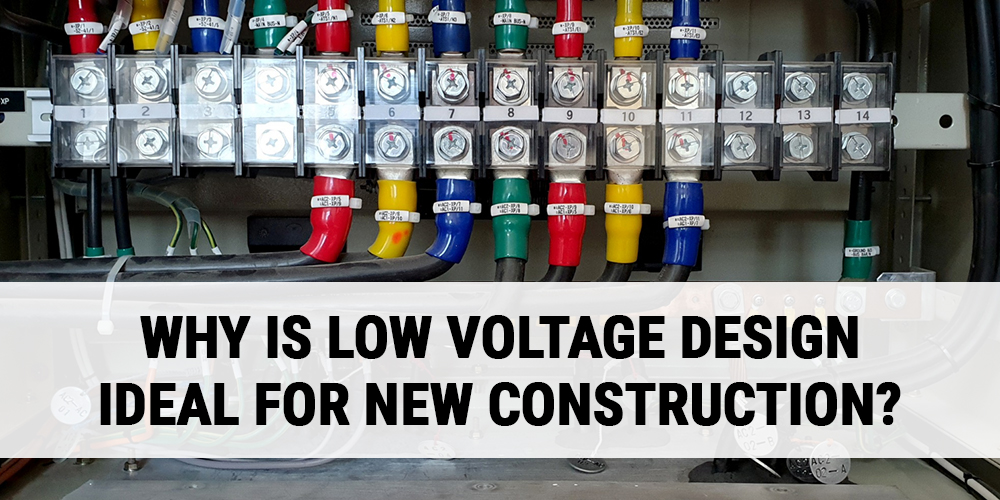The new building construction emphasizes on the energy efficient designs. Therefore, low voltage designs are gaining popularity throughout the world. Wiring low voltage into the sustainable home designs helps to reduce the consumption of the energy and keep the home’s environment friendly.
Let’s take a deep dive to learn about the low voltage wiring and why low voltage design is excellent for new construction.
What Do You Mean by Low Voltage Design?
Low Voltage Design means the wiring system of the home is being used to minimize voltage consumption. Let’s use an example to illustrate this in a better way – Standard voltage outlets have a power supply of 120V to 240V, and most lamps require standard voltage to run reliably.
However, low voltage designs are carried out to minimize the consumption of the voltage. This is not only helpful to make homes energy efficient but also help to make your home’s environment friendly. The voltage wiring design for low voltage is referred to as the structured cabling.
This builds a network of wires that is separate from standard home wires. The network will be able to make an efficient building wire infrastructure that continues to assist in supporting the standard energy consumption requirement. This also ensures to scale the electrical upgrading requirement of the future.
Types of Low-Voltage Cables Used in the Construction of Sustainable Homes
For optimal performance, you need to have low voltage cable systems to assist with cutting down cost. The efficient cable construction helps to mitigate the cooling issues, correct cable, and reduce redundancy.
The common low voltage cables used in the construction of a sustainable home are as follows:
Unshielded Twisted Pair Cable
These Cat. 6 and 6a cables are used in sustainable buildings.
Fiber Optic Cables
These cables are used for extended distance runs and are very challenging to work. This may require the use of connectors and tools.
Speaker Wire
This is used for whole-house speaker and audio connections.
Coaxial Cables
This is the most common form of low voltage wiring used in homes today. These are RG-58/U and RG-6/U and RG-6/UQ, this includes the quad shield.
Security System Wires
This requires two to four conductors such as 24 AWG and 18 AWG
Why is Low Voltage Wiring Preferable for in-Home Construction?
Structured cabling infrastructure in homes is more preferable for the following reasons.
- Low voltage wiring doesn’t run with the standard home wiring which is in turn helps to reduce energy consumption
- Specialized low voltage cables cut down the cost of the bills by minimizing energy usage.
- Minimum maintenance is required and there is less risk of short circuits
- Low voltage designs make homes eco-friendlier and more sustainable than others
Low-voltage cables should be positioned at least 1 foot away from the home’s main electrical cables, and should run parallel to all wiring. The greater voltage on electrical wires might cause interference problems, which could disrupt data transmission.
Bottom Line
A structured cabling network is easy to use, efficient, flexible in the future, and well-organized. It is possible to rapidly identify certain wires. It’s also adaptable and simple to modify or add to. It can transmit data at lighting fast speeds while consuming less electricity and requiring less maintenance.

